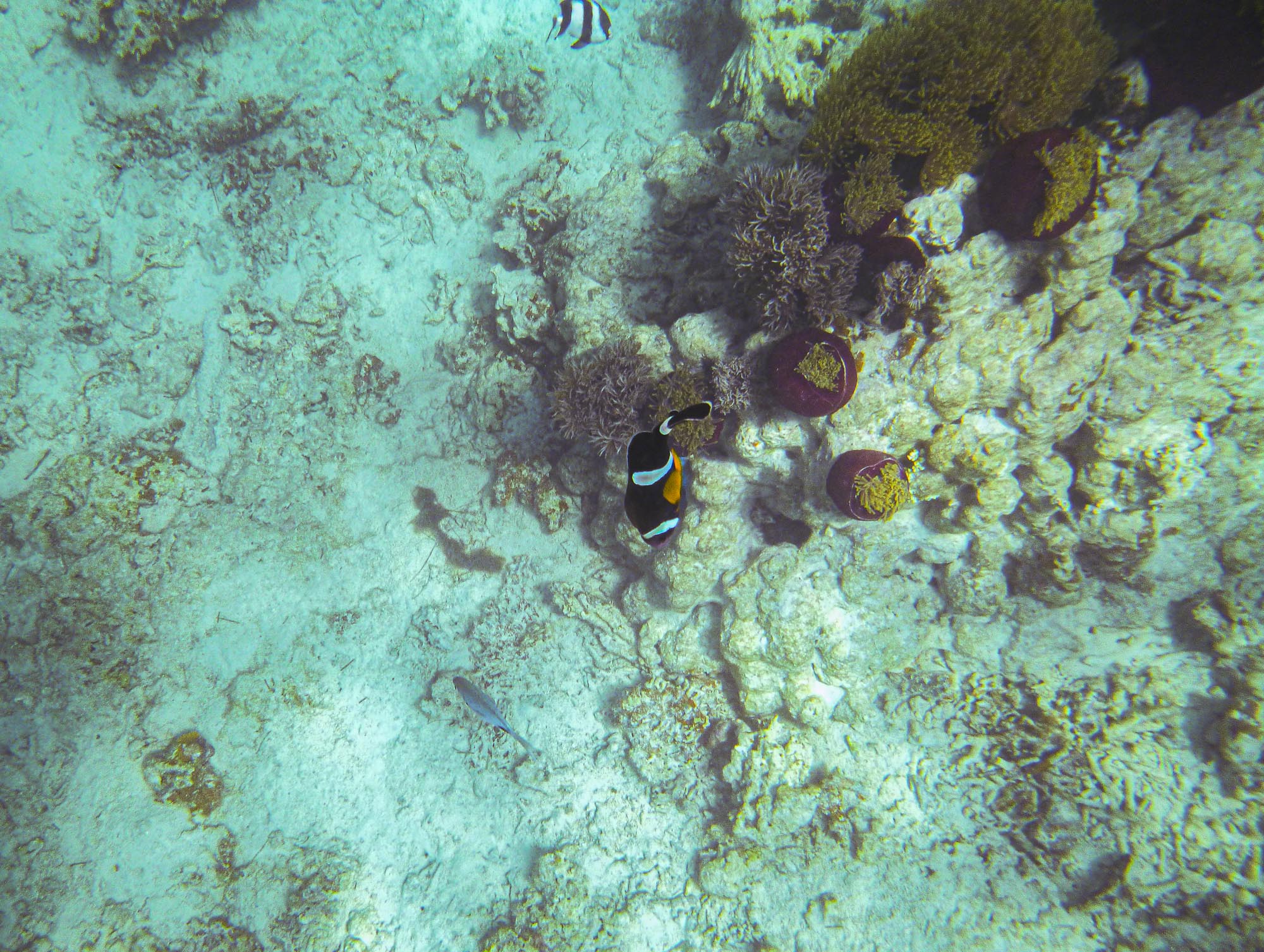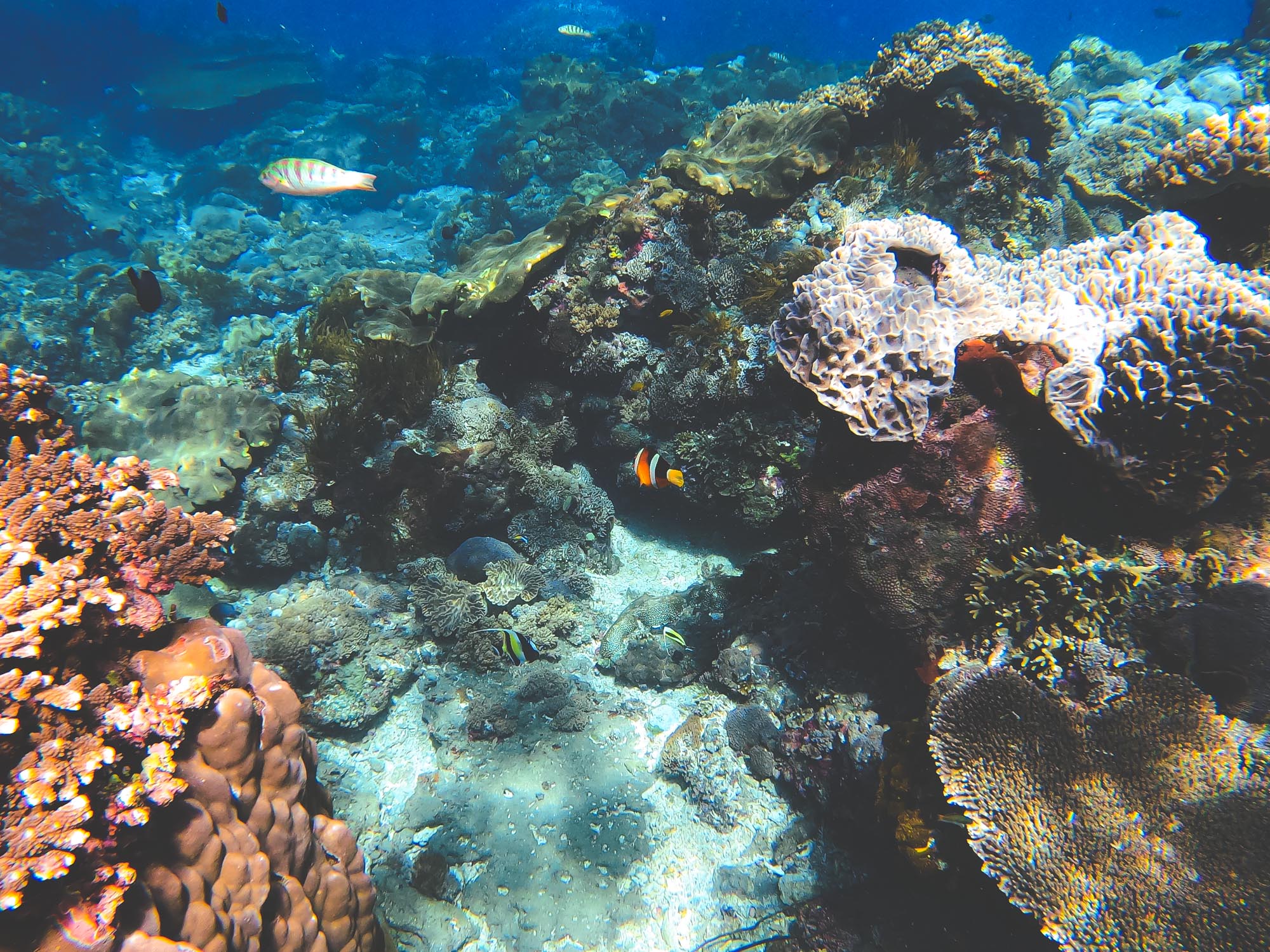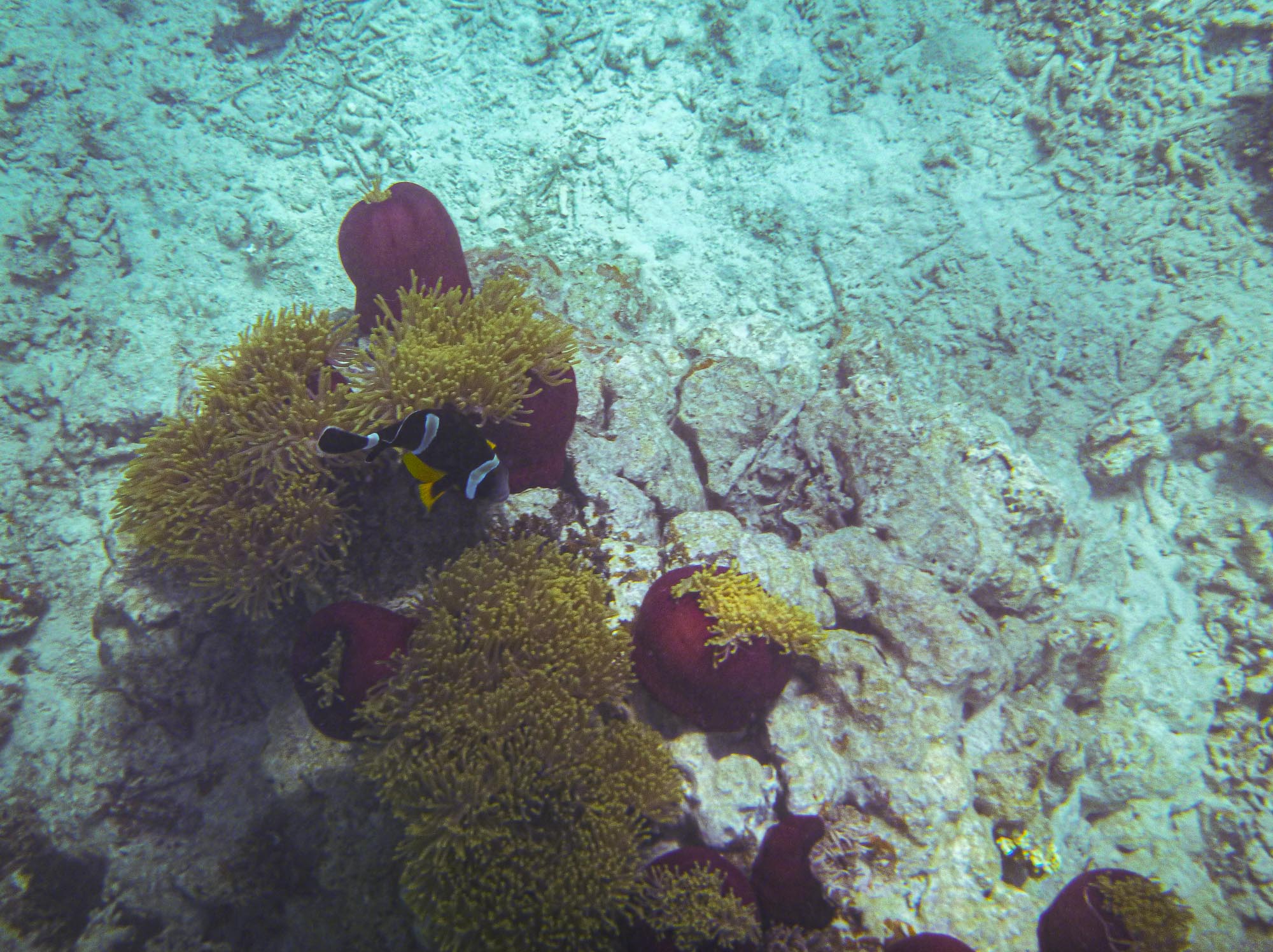Top attractions:
About Clownfish
Clownfishes are probably the most popular and fascinating species of marine fish known for their striking colors and unique behavior. These charismatic creatures live in a symbiotic relationship with Anemones and fiercely protect their habitat. Due to this courageous behavior, they often find you first before you find them. Unfortunately, that is not enough for them to survive as much bigger forces are driving their home – the coral ecosystems out of existence in many places. If we want to be able to continue enjoying their friendship underwater we, as humanity, must meet at least 30% of the oceans protected by 2030. The movement is also known as #30×30.
Clownfishes have become even more popular in recent years due to the Disney Pixar film “Finding Nemo,” which featured a clownfish as the main character. However, despite their popularity, clownfishes face several threats to their survival, including habitat degradation, pollution, and overfishing. By learning more about these unique fish and taking action to protect their habitats, we can help ensure that they continue to thrive in the world’s oceans.

Clownfishes are found in warm waters throughout the Indian and Pacific Oceans but they differ from place to place. Photo by Alis Monte [CC BY-SA 4.0], via Connecting the Dots
The Relationship Between Clownfish and Sea Anemones
One of the most interesting aspects of clownfish is their relationship with sea anemones. The two species have a symbiotic relationship, in which they rely on each other for survival. The clownfish protect the sea anemones from predators and remove dead tentacles, while the sea anemones provide the clownfish with protection and a place to lay their eggs. This relationship has been the subject of study for many years, and it continues to fascinate marine biologists and underwater enthusiasts alike.
Details:
- Size: 8-10 cm / 3-4 inches
- Color: Orange, white, black, or yellow
- Diet: Omnivorous, feeding on algae, small crustaceans, and plankton
- Distribution: Warm waters of the Indian and Pacific Oceans
- Natural habitat: Coral reefs and rocky outcroppings in shallow water up to 15 meters (50 feet) deep
- Species: 30 recognized species of clownfish
Appearance
One of the most distinctive features of clownfishes is their bright orange color, which can also be mixed with white, black, or yellow. They have a flattened, oval-shaped body and three white stripes on their head and body. Clownfishes are small, typically growing to only about 4 inches in length, and they have a lifespan of 6 to 10 years in the wild.

One of the last Mauritian Clownfish individuals still visible to snorkelers. Photo by Alis Monte [CC BY-SA 4.0], via Connecting the Dots
Behavior
Clownfishes are also known for their unique behavior. They are protandrous hermaphrodites, meaning they are born male but can change into females if the need arises. They live in small groups consisting of a breeding pair and a few subordinate males. Clownfishes are territorial, therefore they defend their territory aggressively against intruders including snorkelers and divers, so better be careful and treat them with respect as they often find you first before you find them.
Threats to the Survival of Clownfish
Despite their hardy appearance, clownfish face several threats to their survival. The degradation of their habitat, including pollution, overfishing, and climate change, has led to the destruction of coral reefs, which are essential to the survival of clownfish. When coral reefs are damaged or destroyed, clownfish lose their homes and protection provided by the sea anemones they rely on for shelter and safety.
Another major threat to clownfish is the aquarium trade. The popularity of clownfish as aquarium pets has led to overfishing and illegal collection of clownfish from the wild. It’s important to note that not all clownfish are suitable for life in captivity, and the removal of clownfish from their natural habitat can cause population declines and disrupt the delicate balance of the ecosystem.

Clark’s Clownfish. Photo by Alis Monte [CC BY-SA 4.0], via Connecting the Dots
Protecting Clownfish & Their Habitat
To protect clownfish and their habitat, there are several actions that can be taken. Among the most important of them is to reduce pollution and address climate change by adopting eco-friendly practices in our daily lives. This includes reducing our carbon footprint, using environmentally-friendly products, and reducing plastic waste. These actions can help to preserve the coral reefs that are critical to the survival of clownfish.
It’s also important to support conservation efforts, such as marine protected areas and sustainable fishing practices, and to avoid purchasing wild-caught clownfish for home aquariums. By supporting conservation and responsible consumption, we can help to ensure that clownfish and other marine species continue to thrive in the tropical waters of the Indian and Pacific oceans.
In conclusion, clownfish are a fascinating and important species that play a crucial role in the marine ecosystem. By understanding their behavior, threats to their survival, and conservation efforts, we can help to protect these colorful and charismatic fish for future generations to enjoy.
Gallery of Clownfishes


